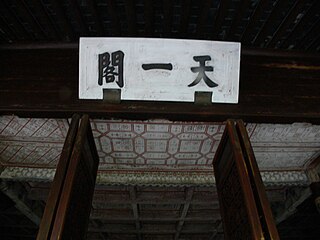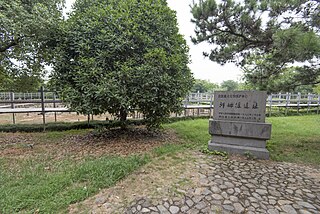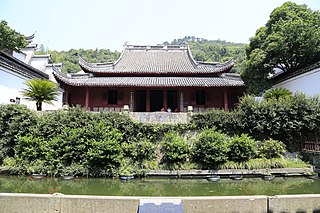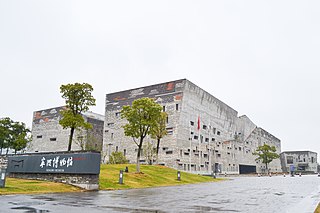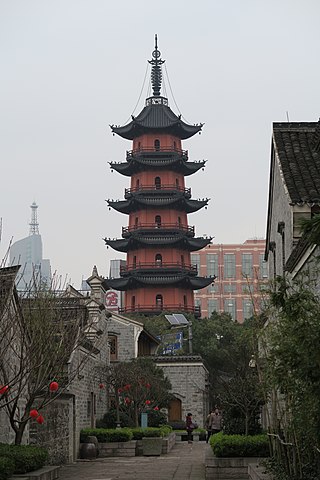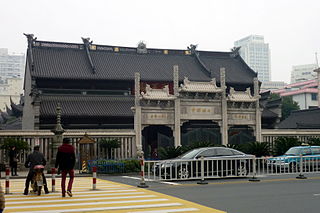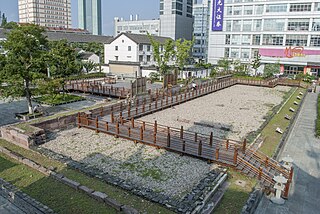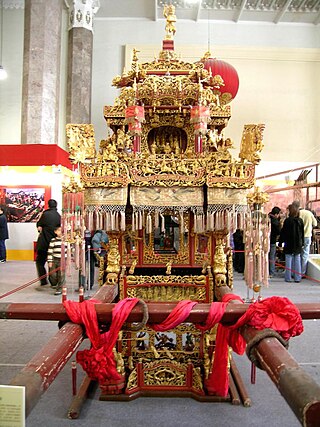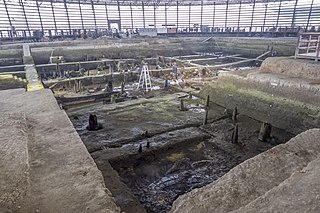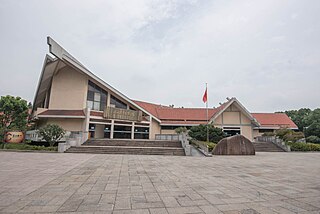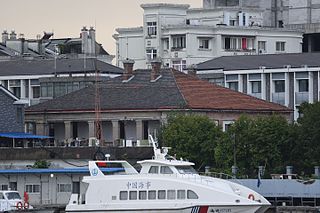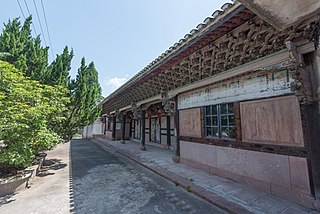14 Sights in Ningbo, China (with Map and Images)
Legend
Welcome to your journey through the most beautiful sights in Ningbo, China! Whether you want to discover the city's historical treasures or experience its modern highlights, you'll find everything your heart desires here. Be inspired by our selection and plan your unforgettable adventure in Ningbo. Dive into the diversity of this fascinating city and discover everything it has to offer.
1. Tianyi Pavilion Museum
The Tianyi Ge, translated as Tianyi Pavilion or Tianyi Chamber, is a library and garden located in Ningbo, Zhejiang Province, China."Books connect the past and the future, and Ningbo Port connects the world" is the propaganda slogan of Ningbo city, among which "Book connect the past and the future"refers to Tianyi Ge.
2. Qing'an Guild Hall Temple
The East Zhejiang Maritime Affairs/Folk Custom Museum is a museum located in Yinzhou District in Ningbo, Zhejiang, China. It is located in the Qing'an Guildhall, a reconstructed complex which once housed a temple to the sea-goddess Mazu. Originally built in 1191, the complex was destroyed and rebuilt several times. After its mid-19th century restoration by Ningbo's guild of Fujianese merchants, it was acclaimed as one of the most beautiful temples in China and was used by the merchants as their guildhall. It was destroyed in 1949 as the Communists were fighting the Chinese Civil War, and suffered further harm during the Cultural Revolution, but was repaired from 1997 to 2001. It reopened in June 2001 as a museum dedicated to eastern Zhejiang's maritime history and local arts and crafts.
3. Hemudu Neolithic Site
The Hemudu site is a Neolithic cultural site between 5000 BC and 3000 BC in Yuyao City, Zhejiang Province, located on the north bank of the Yao River in Lushan Temple Village, Hemudu Town, Yuyao City. The site was discovered in the summer of 1973, and the two excavations since then found that the site contains four superimposed strata, revealing the remains of dry-bar buildings, unearthed relics such as charcoal black pottery and a large number of animal and plant remains and cultivated rice, which caused a sensation in the academic circles, and the archaeological culture it represents was named "Hemudu Culture". In 1982, the Hemudu site was announced as a national key cultural relics protection unit, and in 2001, it was rated as one of the "100 Great Archaeological Discoveries in China in the 20th Century" by Archaeology magazine. The site of discovery is built with the Hemudu Ruins Museum and the Ruins Exhibition Area.
4. Baoguo Temple
The Baoguo Temple is a former Mahayana Buddhist temple located in the Jiangbei district, 15 kilometres (9.3 mi) north of Ningbo, in Zhejiang Province, People's Republic of China. It is noted as the second oldest surviving wooden structure in southern China since the main hall of the present temple dates back to 1013 AD during the Northern Song dynasty.
5. Romon U-Park
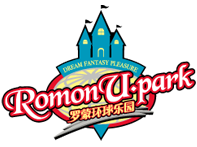
Romon U-park is a 200,000 m2 amusement park located in the south of Ningbo, China. By its size it can be considered one of the largest urban indoor theme parks in the world. It is funded by the leading Chinese clothing manufacturer Romon Group. Romon U-park consists of a 57.4m high indoor park and an outdoor park "Legend Island". There are six differently themed zones in the park; Romantic Avenue, Fantasy Dream, Mystery Land, Adventure Challenge, Festival Plaza and The Island of Legends. In all there are over 30 attractions, 30 specialty restaurants and 20 specialty shops.
6. Ningbo Museum
The Ningbo Museum, also known as the Yinzhou Museum or the Ningbo Historic Museum, is a museum in the city of Ningbo in Zhejiang Province, China. It is located in Yinzhou District and opened on December 5, 2008. The museum focuses on Ningbo area history and traditional customs.
7. Tianfeng Pagoda
Tianfeng Pagoda is a pagoda in Ningbo City, Zhejiang Province, China, located in Dashani Street, Haishu District, built in Wuzhou, and is a landmark building in the old city of Ningbo. At present, the building was rebuilt in 1984 and announced as a cultural relics protection unit in Ningbo in May 1961.
8. Qita Temple
The Qita Chan Buddhist Temple, or Seven Pagodas Temple, is a Chan Buddhist temple located in the Yinzhou District of Ningbo, Zhejiang, China. It is the only major Chan Buddhist temple complex within the city proper of Ningbo.
9. Yongfengku Ruins Park
The site of Yongfeng Warehouse is a storage site of the Yuan Dynasty Government Office in Haishu District, Ningbo City, Zhejiang Province, China. The site is located in the east side of Ningbo Drum Tower, the southeast corner of the Tang and Song Dynasty city ruins, after two phases of archaeological excavations in 2001 and 2002, it was found that the storage sites of the Song, Yuan and Ming dynasties with complete layout were found, including the remains of building foundations, roads, courtyards, wells and other facilities, and more than 800 pieces of cultural relics were unearthed. After research, the location has been the Southern Song Dynasty Changping, the Yuan Dynasty Yongfeng Library and the Ming Dynasty Hongji Library. The Yongfeng Reservoir site is the earliest ancient local large-scale storage site discovered in the Chinese archaeological field, and the unearthed cultural relics confirm that Ningbo was one of the starting ports of ancient overseas trade. In April 2003, the Yongfeng Reservoir site became one of the top ten new archaeological discoveries in the country, in June 2006, it became a national key cultural relics protection unit, and in 2016, it became a "Maritime Silk Road" heritage site of China's World Heritage Tentative List Project. The site is now open to the public as the Yongfeng Library Ruins Park.
10. 十里红妆博物馆
Shili red makeup is a kind of marriage custom that exists in the eastern part of Zhejiang, mainly in Ninghai County, Zhejiang Province, and is named after the local dowry when marrying a girl, and the dowry used is all available from bed furniture to needles and threads, so that the procession to welcome the dowry stretches for ten miles. In 2008, this marriage custom was included in China's national intangible cultural heritage list.
11. Tianluoshan Site Museum
Tianluoshan site is an ancient site belonging to Hemudu culture, located in Xiangao Village, Sanqi Town, Yuyao City, Zhejiang Province, discovered in 2001, and was selected into the primary list of "China's Top Ten New Archaeological Discoveries in 2008". Archaeological evidence shows that the site is dated to about 7,000-5,500 years ago. Because of its ground environment and underground remains, it is known as the "Second River Mudu".
12. 河姆渡遗址博物馆
Hemudu Ruins Museum is a museum in Yuyao City, Zhejiang Province, with the theme of Hemudu culture. The museum is located in Hemudu Town, where the Hemudu ruins are located, and the name of the museum is inscribed by Jiang Zemin. The museum opened in May 1993 as the first batch of national patriotic education demonstration bases, with 500,000 visitors throughout the year.
13. 英国领事馆旧址
The former site of the British Consulate is located at No. 56, Baisha Road, Baisha Street, Jiangbei, Ningbo City, Zhejiang Province, China, which was built in 1880 as the main building of the British Consulate. In June 1934, the British Consulate was transferred by the British Consul in Shanghai, Bi John, to the Yin County Government as an almshouse. After 1949, the consulate and other buildings were demolished, and only the main building remained, and it was used as a camp for the logistics department of the Zhoushan Garrison District of the Chinese People's Liberation Army.
14. 下蒲魏氏宗祠/后舟古戏台
Xiapu Wei Ancestral Hall is an ancestral hall in Ninghai County, Zhejiang Province, China, located in Xiapu Village, Qiangjiao Town. The building was built in the eighth year of Kangxi in the Qing Dynasty (1669), expanded in the sixteenth year of Guangxu (1890), with a construction area of 844 square meters, with a double caisson stage, in May 2006, it was included in the sixth batch of national key cultural relics protection units in the name of Ninghai ancient stage with other 9 ancient stages in the county.
Share
How likely are you to recommend us?
Disclaimer Please be aware of your surroundings and do not enter private property. We are not liable for any damages that occur during the tours.
